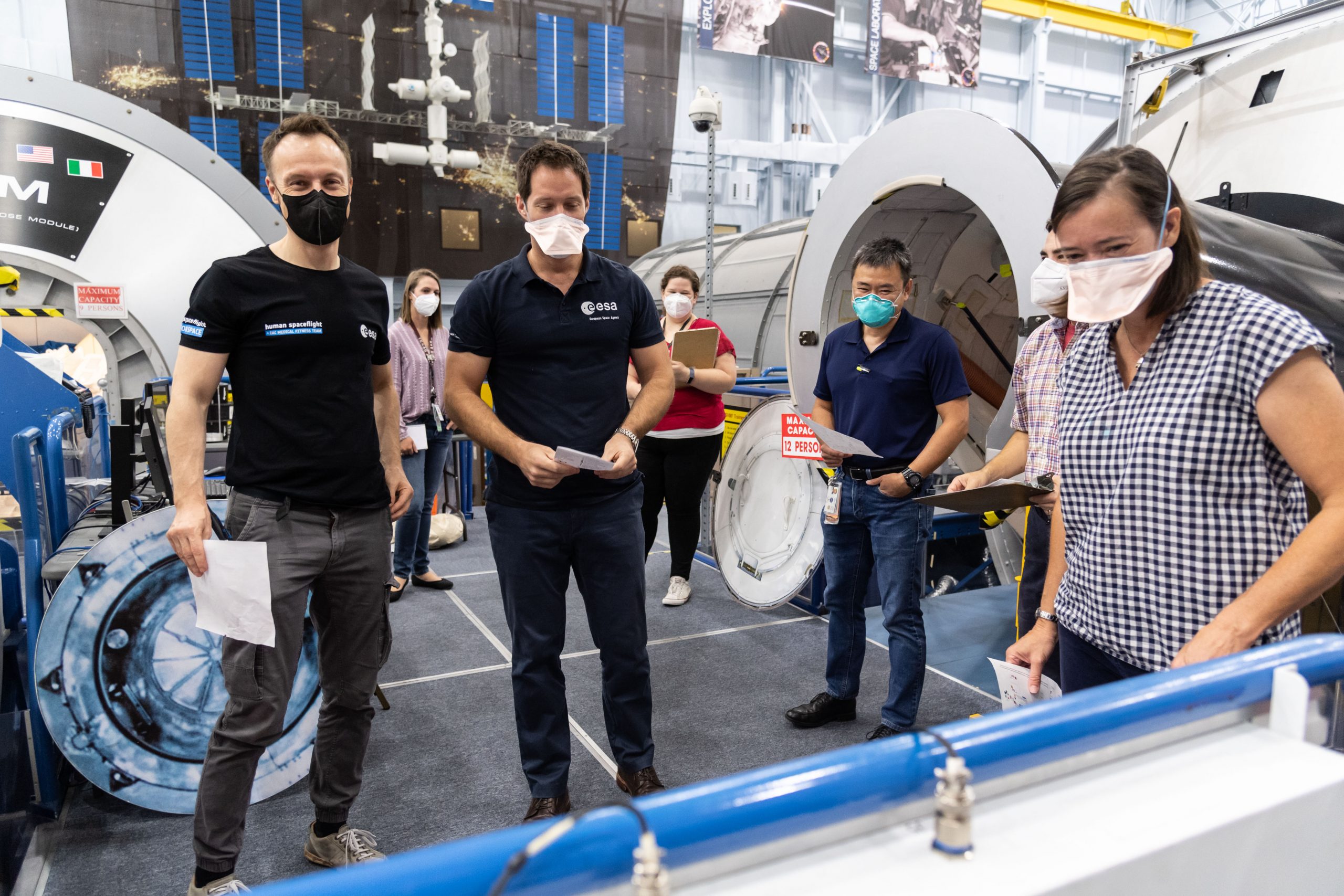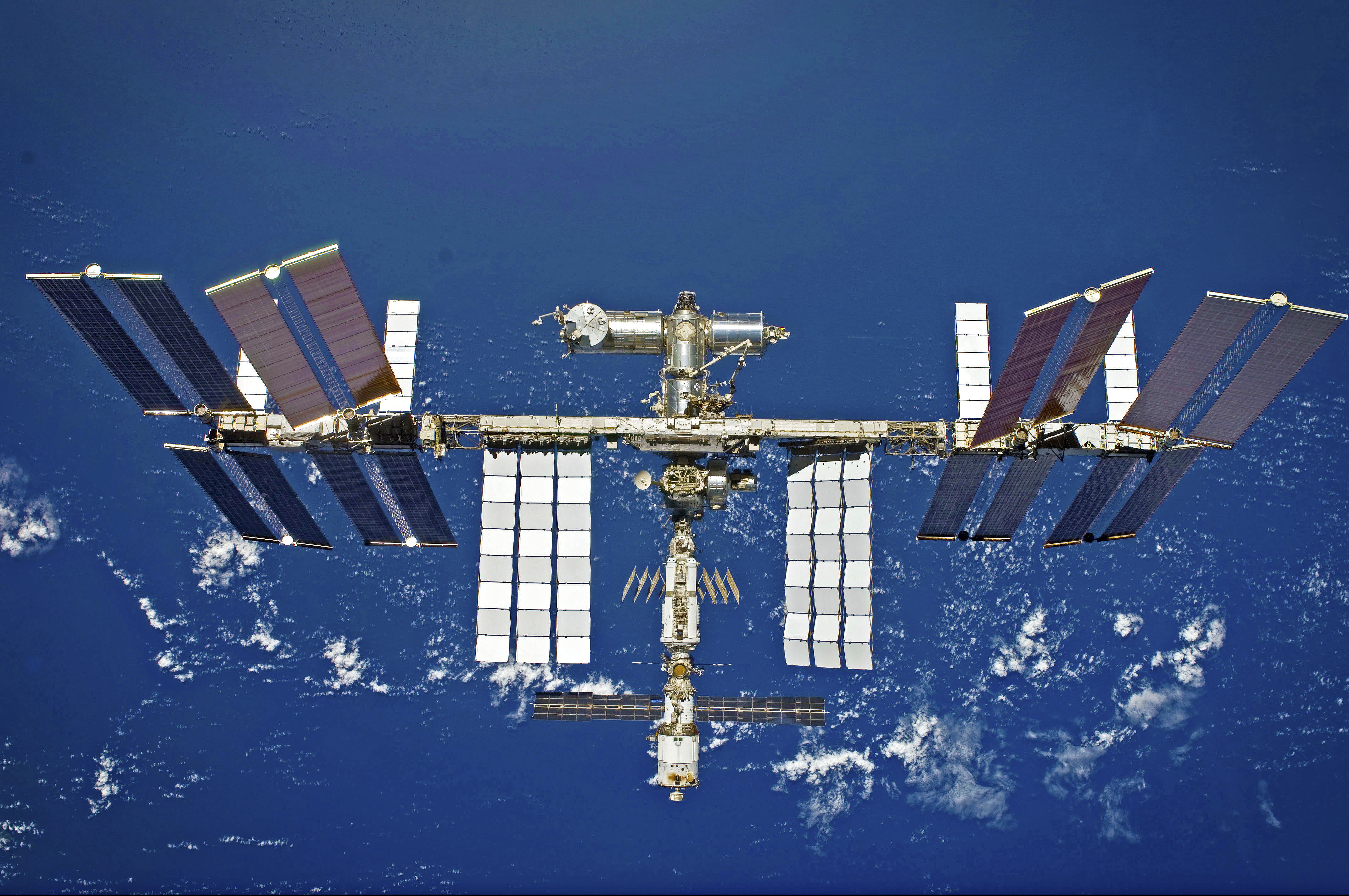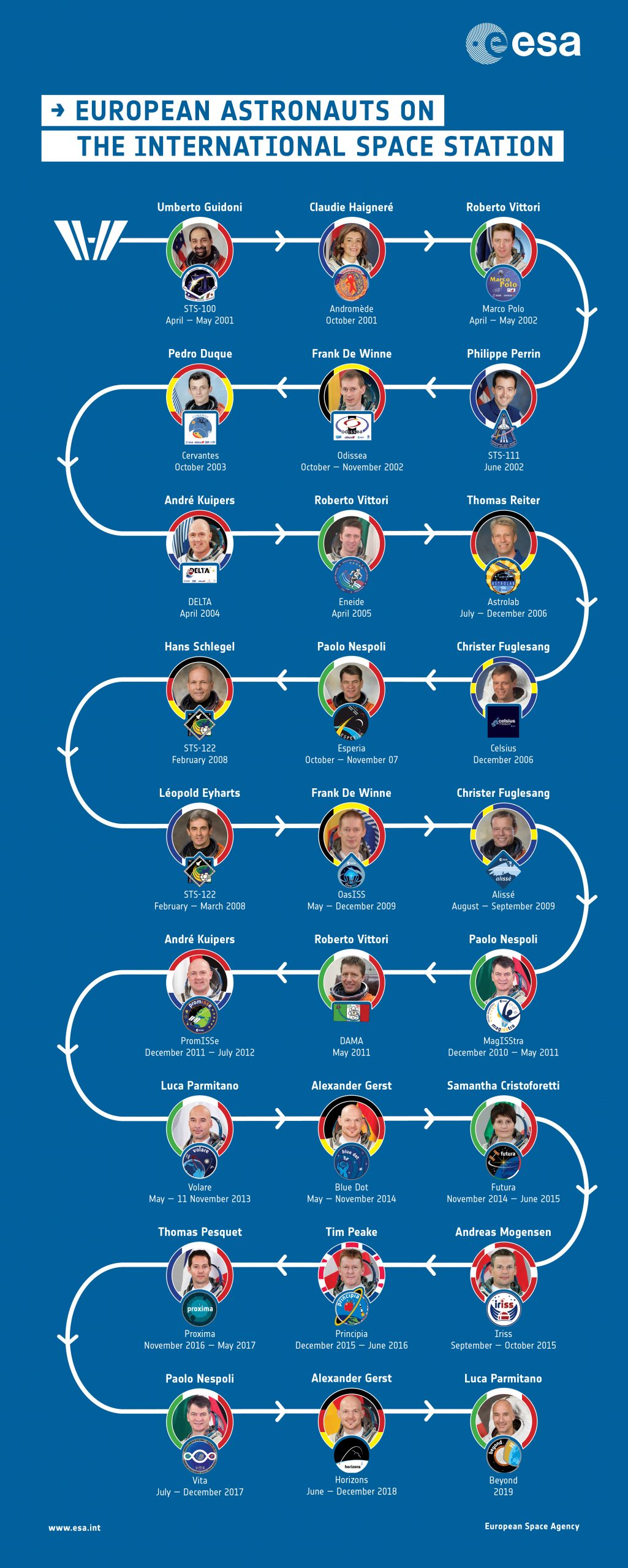For that first crew, made up of NASA astronaut William ‘Shep’ Shepherd and Russian cosmonauts Yuri Gidzenko and Sergei Krikalev, the Space Station was a little bit different to the one we know today. It had just three modules: the Russian Zarya cargo and Zvezda service modules and the US Unity module.
It took 42 assembly flights for all the large modules and other pieces of the Station to be delivered – 37 were delivered on NASA space shuttles and 5 on Russian Proton/Soyuz rockets.
The European laboratory, Columbus, was launched to the Station in 2008 and the European-built Cupola window providing the 360-degree views of Earth that we know and love today was added in 2010.
Typically, the International Space Station is crewed by six astronauts. However, during part of ESA astronaut Alexander Gerst’s Horizons mission in 2018 it was home to just three, and Luca Parmitano shared the Station with eight others for a short period in 2019.
Celebrando 3 compleanni in una settimana, con le maglie della nostra 'space band': 'Kryk Chayky' – 'Lo strillo del gabbiano'.
Celebrating 3 birthdays in one week (Me + @AstroHague & Alexey), wearing the t-shirts of our 'space band': 'Kryk Chayky' – 'The cry of the seagull'. pic.twitter.com/HtcS9jdlcZ
— Luca Parmitano (@astro_luca) September 30, 2019
The Space Station orbits Earth at around 27 580 km/h, meaning astronauts living and working on board experience 16 sunrises and 16 sunsets every 24 hours. It has hosted over 240 astronauts and visitors from 19 different countries. The next European to fly to the Space Station is ESA astronaut Thomas Pesquet.
Thomas will fly to the Station for his Alpha mission in 2021, becoming the first European to fly on a SpaceX Crew Dragon spacecraft.

SpaceX Crew-2 and backup with ESA astronauts Thomas Pesquet and Matthias Maurer and NASA astronaut Megan Behnken during Emergency Vehicle Familiarisation. NASA-R.Markowitz
In the lead up to the 20th anniversary and throughout November, we’ll be reflecting on 20 years of unprecedented international collaboration in space. Join us on Twitter for tributes from ESA astronauts and more Space Station content as we look forward to an exciting future of international exploration in low Earth orbit, forward to the Moon and on to Mars.




